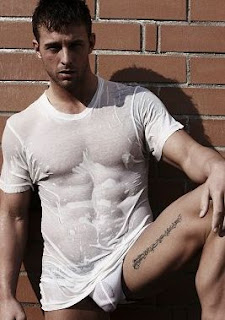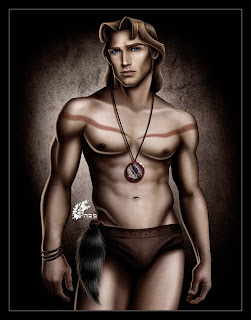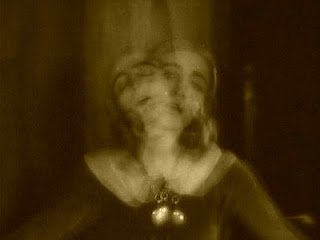My obvious Joan Crawford bias is inapplicable here because I am also a huge huge huge fan of Todd Haynes and think him to be one of the greatest living filmmakers. Hyperbole aside, I was duly disappointed by this remake of the classic pulp novel of James M. Cain written in 1941. The original version was a fail-safe for Warner Bros. when it was made in 1945. At the height of film-noir's popularity, esteemed director of the genre Michael Curtiz cast Joan Crawford who's contract with MGM had just been terminated. The role was a hot property in Hollywood and was turned down by the likes of pain in Warner's ass Bette Davis, Rosalind Russell, and Claudette Colbert. A blessing in disguise considering Crawford was more or less born for Mildred Pierce but had she been directed by Todd Haynes in it currently, I think it would be only a matter of time before she threw something heavy and sharp at his head, or walked off the set for good. Conversely, Kate Winslet is perfect for the new interpretation of this stunning titular character considering this version required alot of sulking, crying, hysterics, and full frontal nudity.
Really quickly here. Mildred Pierce is the story of a mother of two who's husband walks out on the family after she confronts him about an affair he's been having and now is forced to support her two young girls (teenage Veda, and prepubescent Kay {Ray is the name given in the novel and in the Haynes' mini-series}). In the novel, it is during the depression, and Mildred is reluctant to take a job that slides her down the social class ladder. Out of desperation she finally takes a waitressing job but hides it from superficial Veda who is obsessed with materialism and generally bitchitude. After Kay dies, Mildred and Veda's relationship becomes the central conflict of the story. The 1945 version resets the story in post-war America so they can use the film-noir visual aesthetic without it seeming awkward. The Haynes version goes back to the original setting of 1931 until 1938 or so. The costumes, production design, cinematography and everything aesthetic is beautiful. It harkens back to the Sirk melodrama aesthetic of the 50's which Haynes reinterpreted once earlier for Far From Heaven (2002). The beautiful contrast of colors works in keeping an ironically bleak atmosphere that articulates the meniality and hopelessness of prohibition and depression era women. While the 1945 version's stark black and white photography, campy make-up, and ominous tone recreate the tragedy of Mildred Pierce as a murder caper. But even considering this, the original conveys the central tragedy of Mildred and Veda much more intellectually and not to mention more entertaining.
 |
A screen test Crawford
gave to the studio reluctantly. Considering her star status,
she felt it beneath her to submit to an
audition. Even when clothed head to toe, Crawford is sublimely sensual and incomparably attractive. |
|
|
|
The character of Mildred is portrayed by Crawford as well...Crawford. A strong yet sensitive woman who's obsession to please her family leads to her demise. Through her intensely painful and increasingly torturous conflict with her daugher Veda, she plays Mildred as a woman who though self-less is not a push over. You may want to fuck her, but you definitely don't want to fuck with her, because she will destroy your life and completely decimate your existence.
Conversely, (wrongly academy award winning) Kate Winslet is doing her best Medea, via Gloria Swanson through the Ophelia filter, playing with her head down, and her shoulders slugged just to bring the tragic hero point nauseatingly home. In my opinion, it is not a tragedy if the protagonist never experiences success, solace, or happiness. To be fair, there are moments of those aspects transpiring in this new version of Mildred's life, but Kate is playing it as though she is somehow suddenly aware of an impending apocalypse and is upset about the meaninglessness of all existence. It would do better as a character in an Albert Camus novel.
 |
| same can't be said for Winslet. With or without clothes. |
For all of its aesthetic realism, any version of the novel comes down to the performance of Mildred Pierce. There are many interesting characters, but it must be HER story, and the audience must be endeared to her. If we don't empathize with Mildred the whole film is irrelevant, and it's just hard to empathize with someone who is always manically hysterical and whining.
Sexually speaking, we must also be enticed by Mildred. The character is said to be attractive for her age (late 30's), statuesque, and classical. Even though Veda is supposed to be a great beauty, and a staunch seductress, Mildred is supposed to surpass her even though she is not as 'socially attractive' considering she is not in her prime.
Kate Winslet expectantly has numerous scenes of nudity which just become to me, self-indulgent, aggrandizing, and totally unnecessary. I've always thought (ironically enough considering what I write about) that the language of the implied is much more arousing than the language of the explicit. And one scene where the character of Wally Fay (Jack Carson) flirts with Mildred (Joan Crawford) saying something to the effect of he's always wondered what's underneath that robe she's wearing carries more sexual weight than the painfully awkward sex scene in Haynes' version with James Le Gros as Wally Fay, animalistically grabbing Winslet's breasts from behind as if he wants to stuff them back into her body, with Kate breathing heavily as if she's anticipating being shot by him.
What I think makes the original unique in its representation of sexuality and the sexual conflict between her, Monty Baragon her suitor and later husband, and Veda is the Camp element Crawford, Ann Blyth (who plays Veda) and director Michael Curtiz bring to the film. The insane lipstick, the gold lamé gowns, the insane line-backer shoulder pads, they all work so well aesthetically to accentuate that underneath this tragic crime caper, is a tale of profoundly deviant sexual paradigms.
Ironically, Haynes (who never shies away from a gratuitous sex scene, and thankfully because up until now this method has been effecting) now peppers the story with cliché and trite visuals that are i guess are supposed to articulate that which was so beautifully aesthetically done in the 1945 version.
I remember reading an interview with Evan Rachel Wood who plays Veda in the Haynes film about her merkin. For those playing the home game a merkin is kind of like a fake beard for your vagina. She said ever so redundantly that 'the film is set in the 30's and therefore, everything had to have the appearance of the 30's'. She also said that Kate Winslet was the one that talked her into doing her big nude scene in the film, which I swear is dragged out for like 10 minutes. We don't need to see Veda Pierce in front of a vanity staring at her naked self to realize that Veda is a shameless, selfish, super bitch-whore. But thanks I guess, for spelling it out.
Mildred Pierce is a piece of material that is in its nature unavoidably campy, even in the source material. It is a story ripe for cynicism, gaudy imagery, and debauchery. In my opinion, reinterpreting it as a dragging 5 hour melodrama just doesn't work. And as much as I love Todd Haynes, I think he dropped the proverbial adaptation ball with this one. For argument's sake, of course we can equate each version to what is popular in cinematic times to both, but I believe Haynes' Mildred Pierce even fails there, as it resembles not much more than an extended Lifeime movie with A-list Academy Award winning actors to carry the mediocre material.
To conculde, Camp is just not seen as much in the cinema as it once was, which is a great great tragedy. Camp could be one of the most inventive, original, and for lack of a better word fun anomalies in pop-culture, and to see it wither is just such a shame. The big irony of this whole Haynes' tragedy is that he as a director is so skilled in reinterpreting Camp for contemporary audiences. From his first film (his thesis for Brown University) 'Superstar: The Karen Carpenter Story' to loose Bowie bio-pic 'Velvet Goldmine', to his relentlessly emphatic and outlandish remake of Douglas Sirk's 'All That Heaven Allows' as a camp-thriller, he has been brilliant in how he articulates that ideology from film to film, it's just so strange that he completely neglected what he does best and tried to make an 'Oscar' film. Disclaimer, i know it's a mini-series, therefore not eligible for the Oscars, but resembles all of the trite characteristics that Best Picture nominiees tend to have. Could we see this as Haynes' big sell out? I really hope not. Had Todd Haynes directed this mini-series with someone like Penélope Cruz, it would have still resonated with Mildred Pierce's original spirit.
Here's an article on the apparent death of camp articulated with Todd Haynes' reinterpretation of the James Cain classic.

































